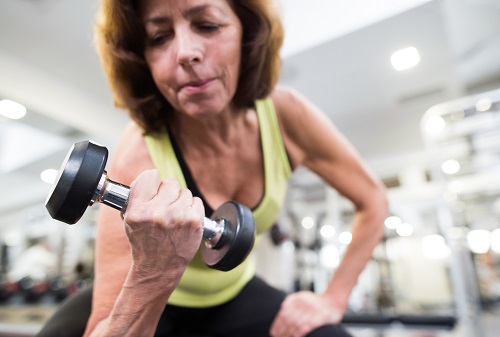Yet high intensity doesn't need to be prolonged, according to a new study in the Journal of Bone and Mineral Research which found that even 30 minutes twice a week of high intensity resistance and impact training improved functional performance and bone density, structure, and strength in postmenopausal women with low bone mass (T-score < –1.0), without adverse effects.
In the study, 101 women ages 60-70 were randomized to either 8 months of twice-weekly, 30-minute, supervised high-intensity resistance and impact training (5 sets of 5 repetitions, >85% 1 repetition maximum) or a home-based, low-intensity exercise program.
Pre- and post-intervention testing included lumbar spine and proximal femur bone mineral density (BMD) and measures of functional performance (timed up-and-go, functional reach, 5 times sit-to-stand, back and leg strength). Compliance was high and only one adverse event occurred in either group.

The results indicate that closely supervised exercise training interventions of this type are effective and safe for bone.
"We were delighted to find that even women with very low bone mass could tolerate the high loading required to increased bone mineral density as long as it was introduced gradually with close attention to technique," said Dr. Belinda Beck, senior author of the study. "The simultaneous improvement in functional performance suggests our exercise program provides dual protection from osteoporotic fracture by also preventing falls."





Comments